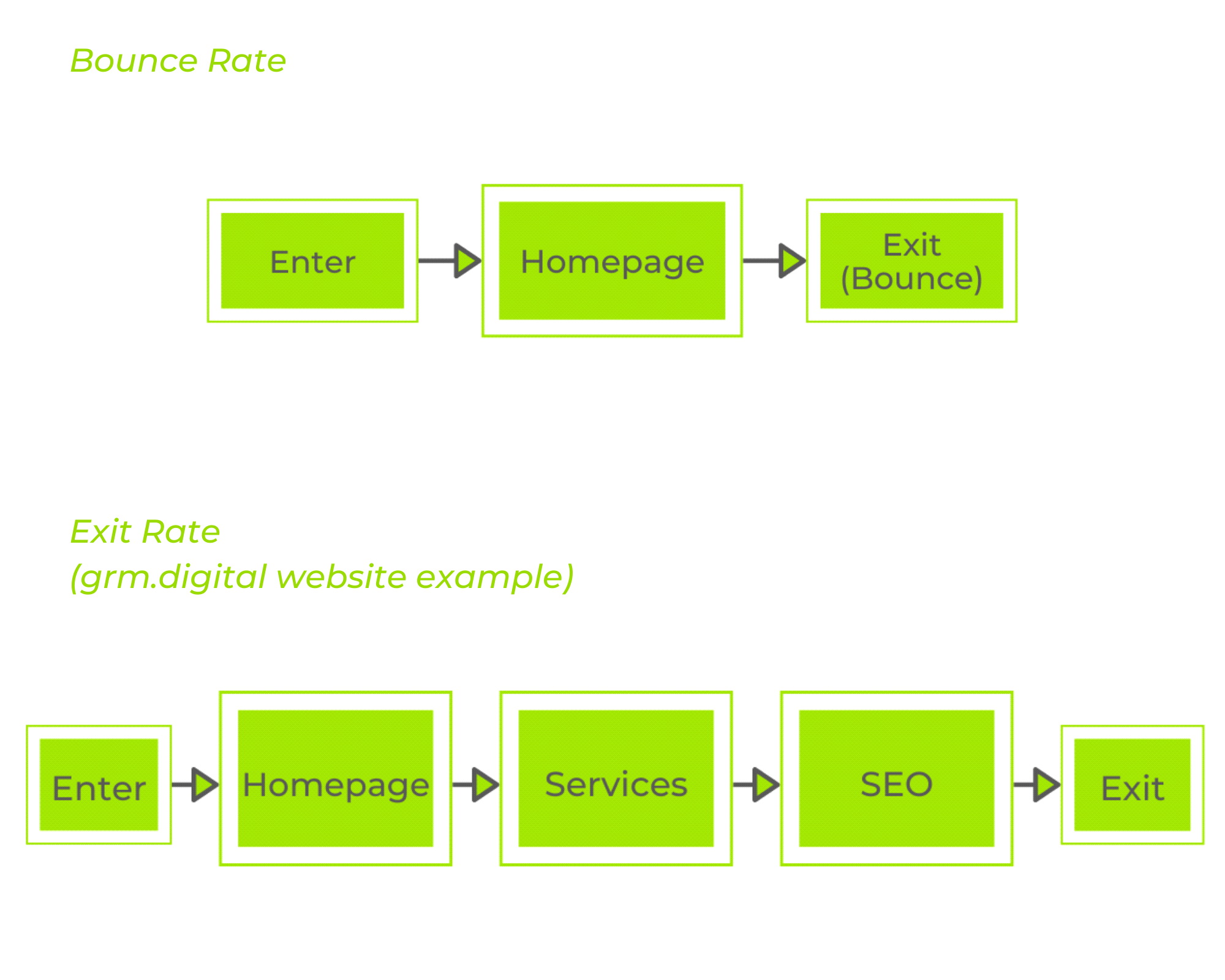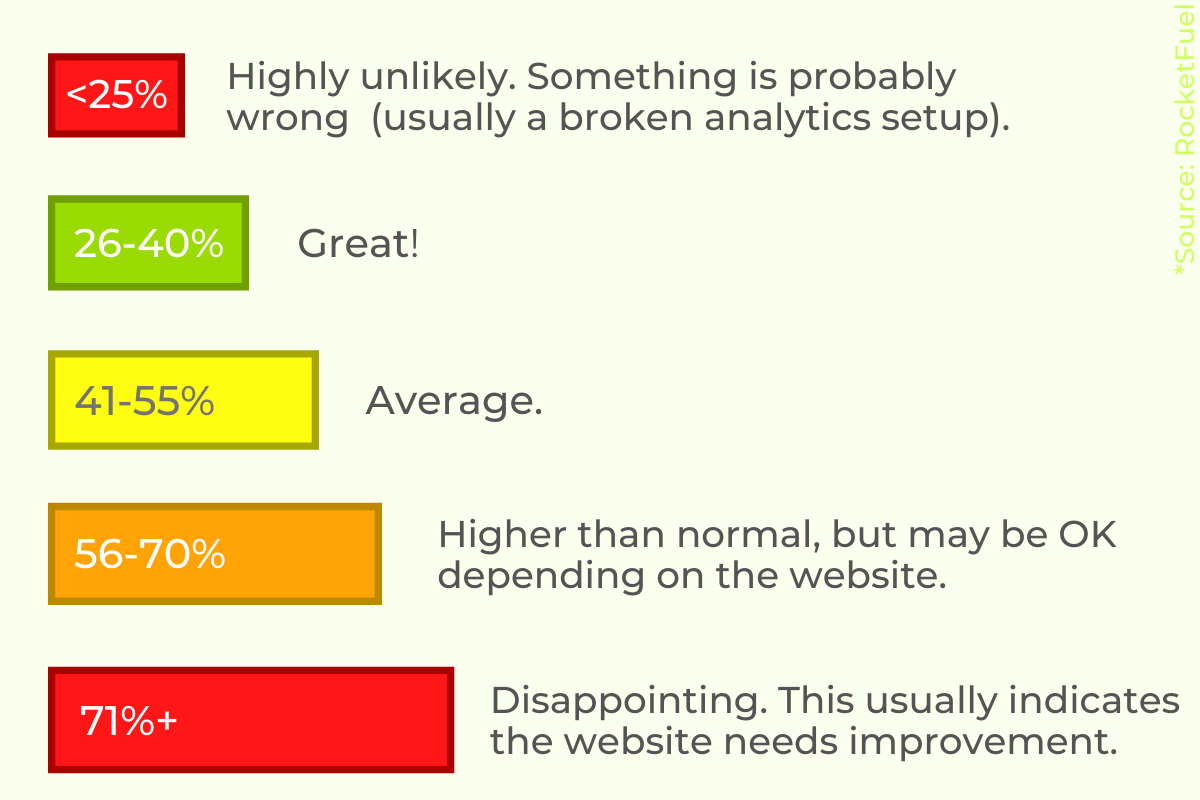Bounce Rate: What Is It & How to Reduce It Effectively?

Do you feel like users are “bouncing” off your website too quickly and that they aren’t engaging with certain pages as much as you’d hoped? It might be worth taking a look at a handy little website metric called bounce rate.
In this blog, we’ll tell you the most important things to know about bounce rate and what you can do to keep it under control.
What does bounce rate mean, anyway?
A bounce is normally defined as a single-page session on a website. In other words, if a user lands on your website page and exits without any further interactions, that means they’ve “bounced”. So, bounce rate is the percentage of visitors who leave your website after viewing only that one page.
 Bounce rate
Bounce rate
Right away there’s something we need to point out, though: this is the usual approach to bounce rate. As you’ll see in the remainder of this blog, there are a few factors that may complicate matters a bit. We do, however, want to shed light on some of the key things to know about BR and what can be done in general to reduce it.
Note: Do not confuse bounce rate with exit rate. Exit rate refers to the event of a user navigating through your page a bit before leaving it. You can take a look at the image below, which illustrates the difference using the GRM Digital website as an example.
 Bounce rate and exit rate difference
Bounce rate and exit rate difference
Why is bounce rate important?
Generally speaking, a high bounce rate (hereinafter referred to as BR) is usually the stuff of nightmares and website owners should aim for a low BR rate on most pages. However, it’s worth keeping in mind that sometimes a lot of “bounces” aren’t a bad thing at all.
For example, if someone searches for “banana bread recipe” and they land on your website, find all the information they need and leave without navigating further, a high bounce rate is normal and expected.
In any case, BR is definitely a metric you should care about. It serves as an indicator of how effective and relevant your website is. Basically, it allows you to see how well each individual page is fulfilling its purpose and figure out ways to improve the ones that are underperforming.
You’re probably also wondering: “If I make sure each page has a desirable BR, will my website rank higher on Google?” Well, yes and no. In essence, BR itself is not part of Google’s ranking algorithm, so it’s not really going to affect your SEO.
However, certain steps that you can take to reduce it are going to improve the overall quality of your website, so you may move up in the search results based on that.
How to check your website bounce rate?
These are the formulas used to calculate the BR:
website bounce rate = single-page sessions / total sessions
page bounce rate = single-page sessions on the page / total sessions beginning and continuing from this page
When it comes to viewing the BR in Google Analytics (GA), you can go to: Behavior > Site Content > All Pages. You can also view bounce rates for individual web pages by searching for specific page names.
Since all page bounce rates affect the overall percentages, you can choose what to include and exclude from the reports in GA. Make sure to explore in detail all the options in GA, since it’s an incredibly powerful tool not only for BR improvement, but for your entire online presence as well.
Now, we’ve said that there are a few factors that complicate the concept of BR a bit. Let’s take a look at them.
Traffic source
Traffic source is directly connected with the website visitor’s intent. That’s why the BR will vary based on where your users are coming from. For instance, it’s only logical that visitors arriving via social media posts or display ads will bounce more frequently than organic searchers, because they aren’t actively looking for your offers.
Page purpose
As we’ve indicated earlier, sometimes you’ll have content that is intended for single-page sessions. That’s when high bounce rates are nothing to be alarmed about. If, however, you have a page that is supposed to lead visitors through a sales funnel, for example, then you should aim for the lowest possible BR.
Tricking GA
So, bounces happen when the user views only one page and doesn’t interact any further with your site. Now, the tricky part is that any event be counted as an interaction if you set it up that way. That means the bounce rate can be reduced even if the user didn’t actually visit a second page on your site. If you go to Events and set up, say, playing a video on the page as an Interaction, this will still be a single-page session, and yet your BR will not be high.
Unanswered questions
The bounce metric isn’t always helpful. First, when a bounce occurs, GA sees the session duration as zero, whether the user left instantly or read through the entire page. Therefore, we don’t know how much time was spent on the page, so it’s a bit challenging to know in what way the visitor consumed the content on it.
Likewise, the BR doesn’t tell you much about page performance either. A user may have left because the page is loading too slowly, or because they found what they needed right away. That’s why you should never consider bounces as an isolated metric, but scrutinise them as part of a wider context.
Common reasons for a high bounce rate
We’ll repeat it one more time – bounces should always be considered in context. Without tracking other critical metrics for your site, you won’t be able to interpret bounce rates correctly and you’ll end up wasting your time on ineffective activities.
The same goes for the question: “What is a good bounce rate?” It is not that simple to answer, as each business and its website are unique. So, when auditing your BR and trying to figure out a course of action, make sure you take into account the whole picture.
Nevertheless, we do want to point out some of the common reasons for a high BR and effective ways to lower it.
In general, according to a study by RocketFuel, we can classify percentages as in the image below:

Generally speaking (again), it’s possible to highlight a few main reasons why users might bounce off your site quickly:
- Slow loading speed (this is a big one – BR increases by 103% if your site takes an extra 2 seconds to load)
- Misleading meta title and/or description
- Lack of visual appeal
- Low-quality content
- Technical errors, etc.
How to lower your bounce rate?
Most of what you can do to reduce the percentage of people bouncing off your site comes down to giving them a seamless user experience.
Normally, conversion rate optimisation, which we’ve talked about before, can simultaneously lower your BR. So, definitely invest time in activities like:
- Creating an eye-catching CTA.
- Using responsive web design.
- Implementing a live chat option.
- Including client testimonials and reviews.
- Creating effortless navigation for users.
Aside from that, here are a few more recommended actions you can take to achieve a more desirable BR.
Make your site more user-friendly by:
- Implementing a functional search option.
- Using a visually appealing design.
- Limiting the number of pop-ups and distracting ads.
- Fixing broken links.
- Creating helpful and unique 404 pages.
- Having all links open in a new tab.
- Making content readable and properly formatted.
- Using various kinds of content.
Leverage paid ad targeting options
As we’ve said many times before, paid media can really help get your business out there in the online space. Different paid media platforms, for example Google Ads or Facebook Ads, have various targeting options that allow you to put your ads in front of those most likely to be interested in your products.
In order to increase website engagement and thereby lower your BR, try to make the most of those options. Though people seeing paid ads aren’t specifically looking for products and services like yours, if you do your targeting right, this might spark their interest to explore your business. At the very least, you’re improving brand awareness and your chances of generating leads.
Summary
We’ve seen that, when it comes to bounce rate, things are not as simple as “low is good, high is bad”. It’s a much broader and more complex topic that is impossible to cover in one blog, but we’ve scratched the surface and pointed out the essential things to know about this metric. In sum: rely on analytics, do thorough research, and go for data-driven improvement efforts.
If you are looking for more information about bounce rate, want to reduce yours, or need help understanding your website metrics in general, feel free to contact us. Digital agency GRM Digital’s marketing experts and web development specialists are here to help you get your site to the highest level.
